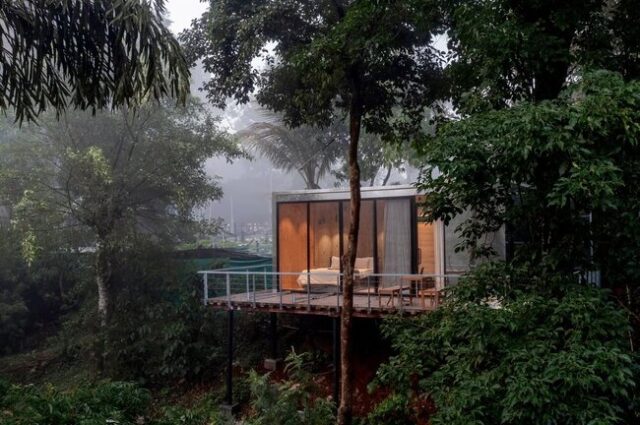
Nestled in the heart of Chikmagalur, Karnataka, India, the mirrored holiday home known as Reflections by Okno Modhomes seamlessly blends luxury with sustainability. This idyllic retreat, spanning 300 square feet, is surrounded by a vibrant jungle, providing an escape from urban chaos. The contemporary design of the home, adorned with a striking mirrored facade, creates a harmonious blend with the lush environment. The mirrored exterior reflects the greenery, minimizing the visual impact and enhancing the home’s integration with its natural surroundings. Constructed with minimal environmental impact, Reflections features metallic and wooden elements that introduce a modern yet earthy aesthetic, embodying a perfect union of nature and architecture. The home stands as a testament to the possibility of coexisting peacefully with nature through thoughtful and sustainable design.
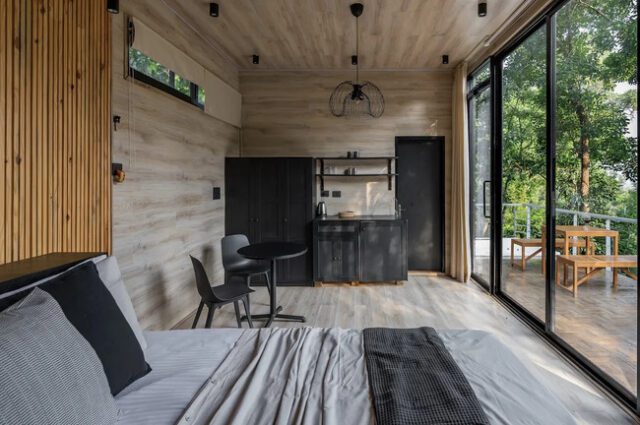
Upon entering Reflections through a charming entryway, visitors are greeted by a raised living area that appears to float amidst the trees, offering expansive views and the soothing sounds of the forest. The open-plan living space, adorned with floor-to-ceiling glass windows, blurs the line between indoor and outdoor living, allowing immersive experiences with the surrounding greenery. This central area seamlessly connects to an outdoor deck with a hot tub and cozy lounge area, perfect for stargazing and admiring the forested landscape. Further exploration reveals a bedroom designed for comfort and tranquility, featuring natural materials like soft textiles and organic wood finishes. A motorized sliding bed adds a unique touch, offering a direct view of the night sky. Okno Modhomes emphasizes that the mirrored facade not only enhances the visual appeal but also serves an environmental function, reflecting the natural surroundings to reduce visual impact and promote harmony with the landscape. The use of sustainable materials and energy-efficient systems underscores Reflections’ commitment to being eco-friendly while providing a luxurious retreat.
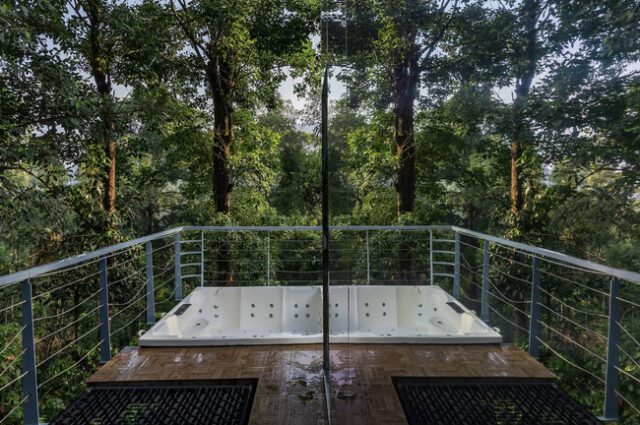
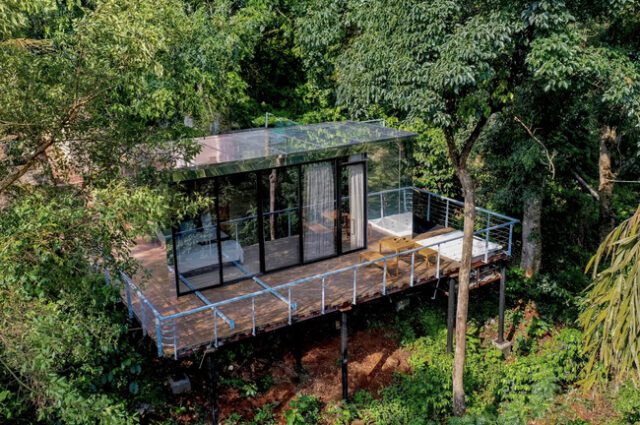
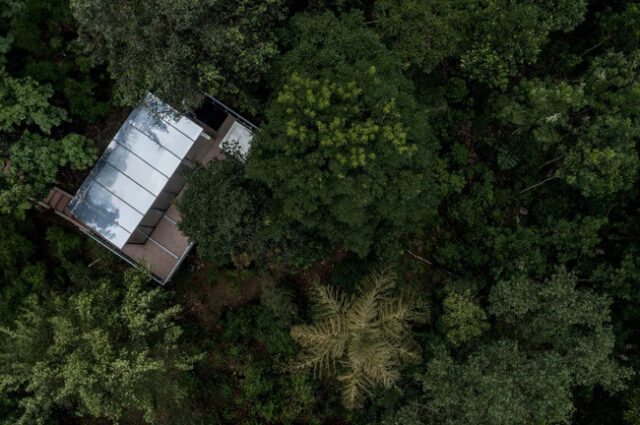
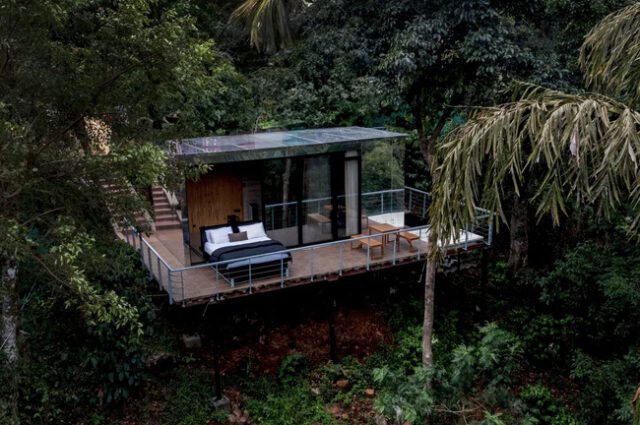
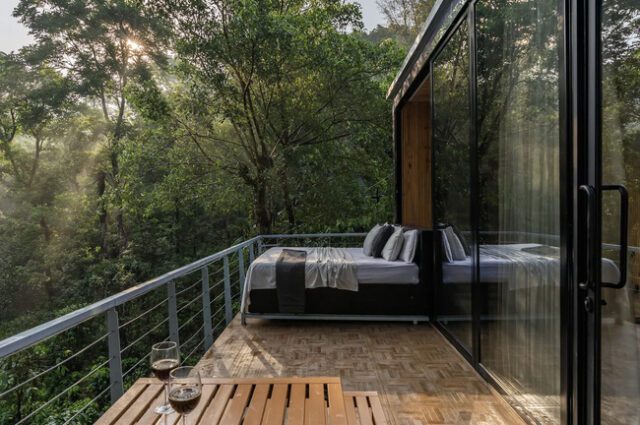
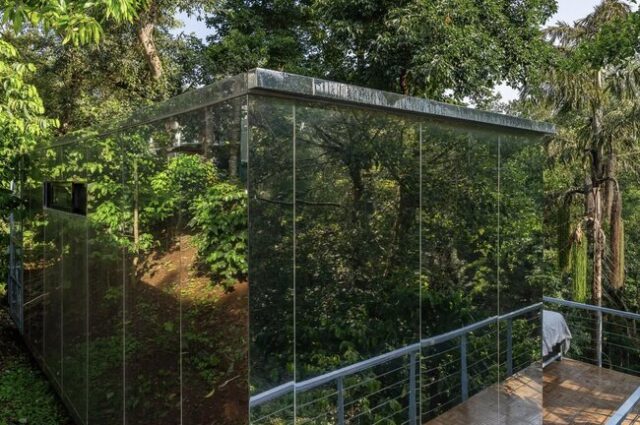
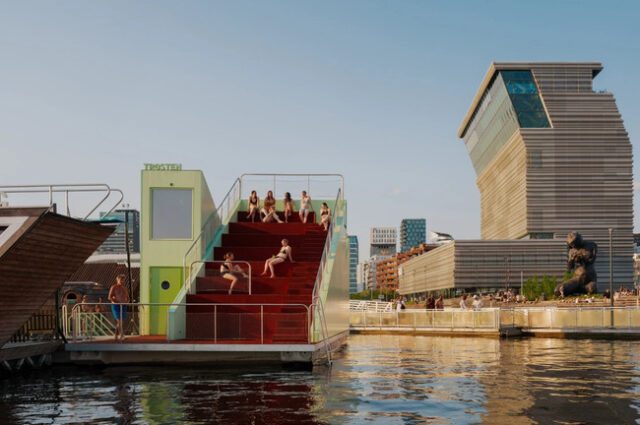
When visiting a museum beside a body of water, the thought of unwinding in a sauna after a day of exploration can be very appealing. The Munch Museum in Oslo, Norway, offers this unique experience with Trosten, a floating sauna in the adjacent fjord. Both the museum and the sauna are designed by Estudio Herreros, emphasizing accessibility and sustainability. Inspired by architectural follies, Trosten combines aesthetics with functionality, featuring a distinct, colorful silhouette. Constructed offsite, its main structure is placed on a prefabricated floating concrete platform and clad in green-toned aluminum to create a serene atmosphere. The sauna integrates traditional wooden decking with modern elements like large terrazzo tiled surfaces, steel handrails, and netting, enhancing its visual appeal and usability.

Trosten’s design ensures visitors can enjoy a relaxing and environmentally conscious experience. The exterior offers stepped seating for sunbathing, while the interior provides lockers, seating spaces, and stepped wooden seating within the sauna. Additionally, a sheltered seating area at the back allows access to the fjord for cooling off. The sustainable design includes an energy system, steam recirculation, and natural and recycled materials, minimizing its environmental footprint. This floating sauna is a perfect retreat after a day at the museum, offering a unique combination of relaxation and ecological mindfulness in a picturesque setting.

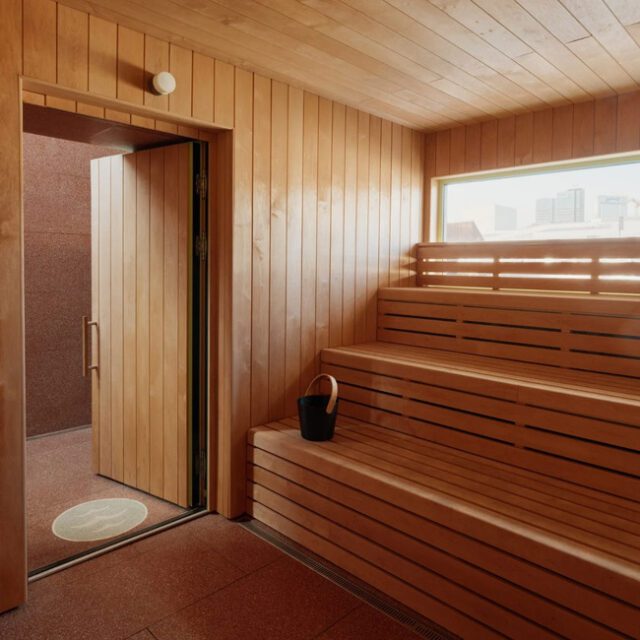
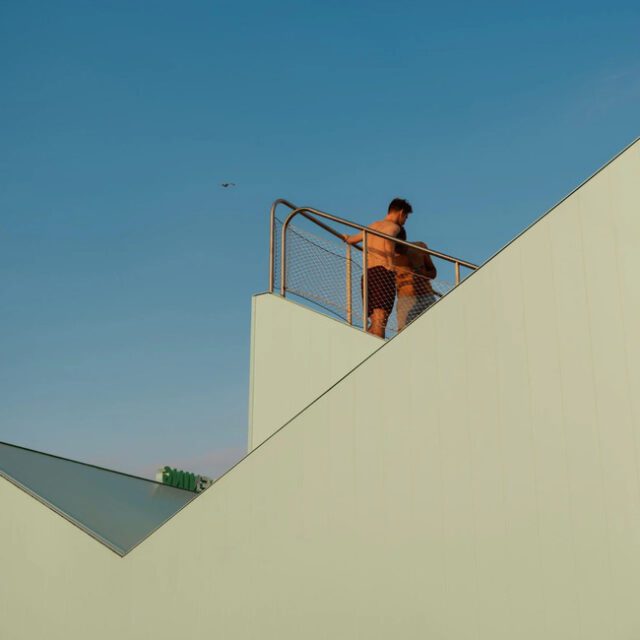
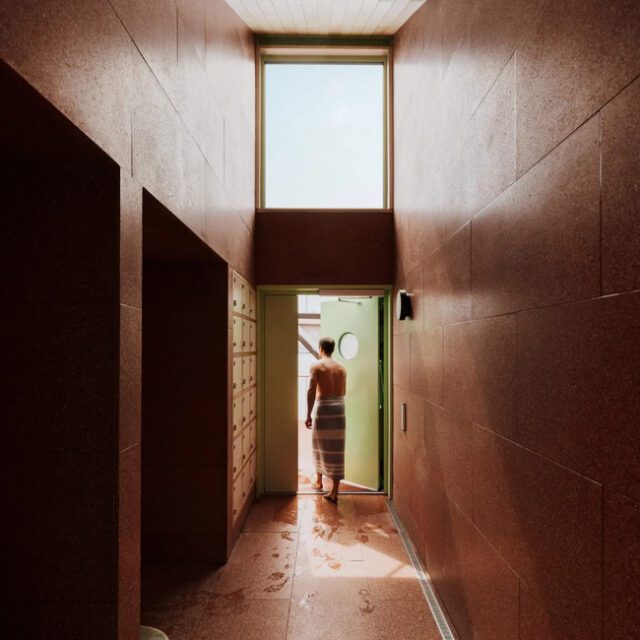
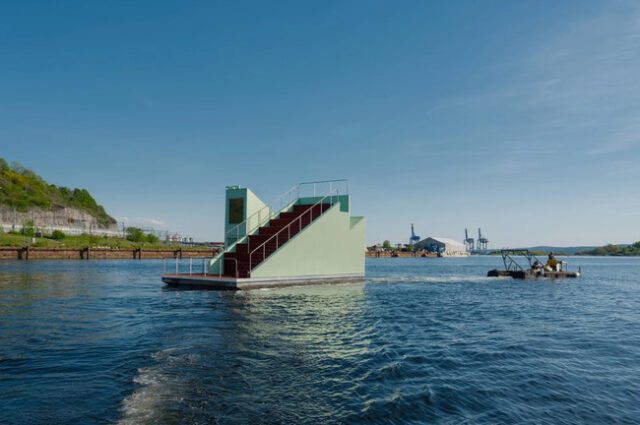

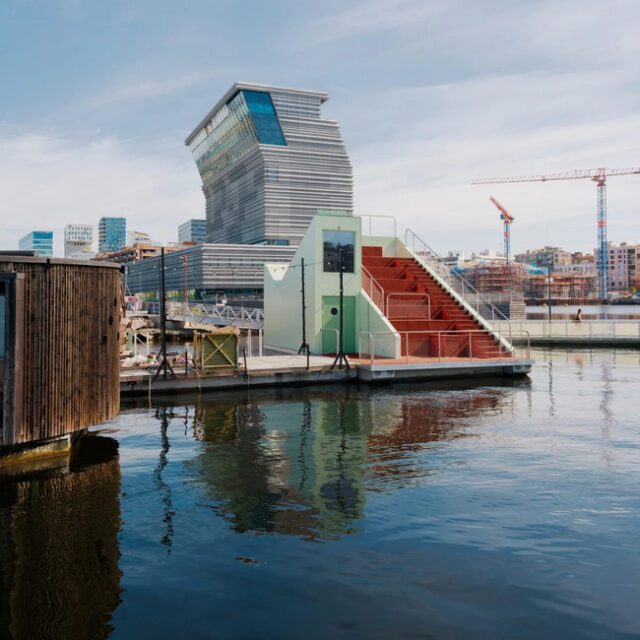
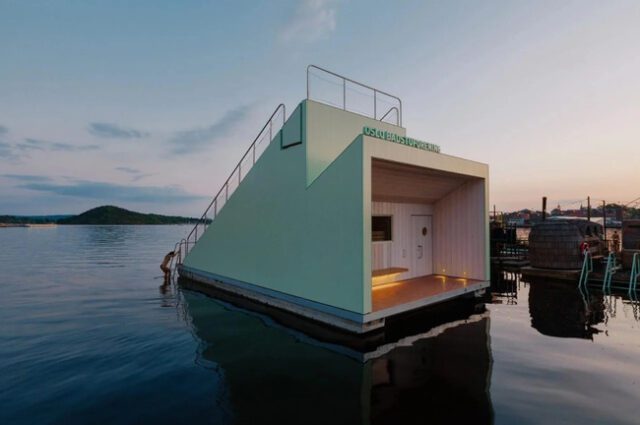
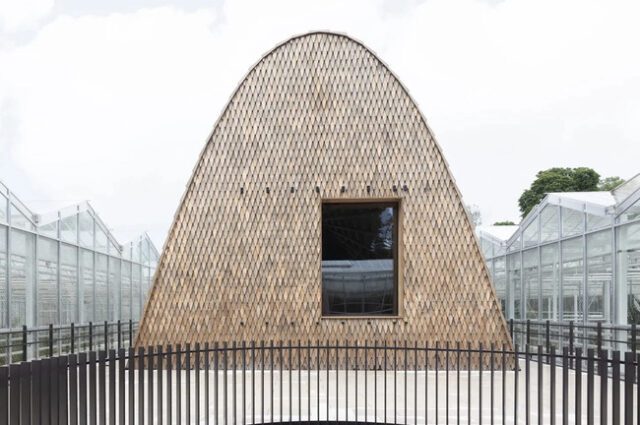
Designed by NU Architectuur Atelier, the Green Ark pavilion is a remarkable example of sustainable architecture in Belgium’s Meise Botanic Garden. Located in the heart of the 92-hectare conservatory, this sophisticated structure is part of an ambitious project aimed at restoring and extending 7600 square meters of greenhouses within the historic Bouchout Castle grounds in Flemish Brabant. Built primarily from Kebony Clear wood, a modified softwood with the durability of hardwood, the pavilion’s lattice structure is visually striking and environmentally conscious. The Meise Botanic Garden, one of the largest conservatories globally, plays a crucial role in preserving endangered plant species. The Green Ark pavilion enhances the garden’s mission by offering visitors an immersive educational experience, showcasing the importance of plant conservation.
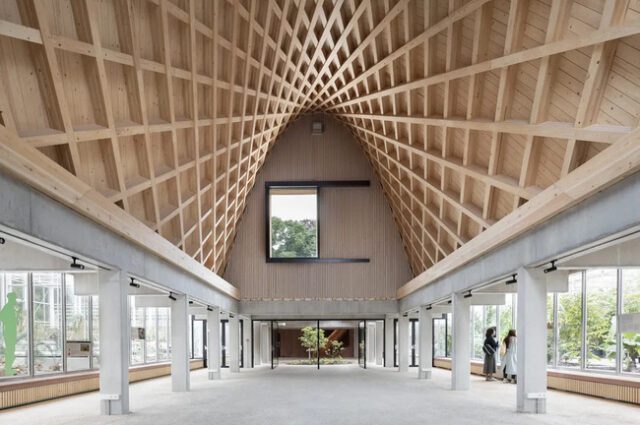
The Green Ark’s design features a dramatic, curved roof composed of Kebony wood shingles, which resemble cascading scales. This distinctive aesthetic not only adds to the pavilion’s allure but also serves practical purposes, such as rainwater recycling. The interior boasts a wooden structure on a concrete frame, paired with a glazed ground floor that provides intriguing glimpses into the surrounding greenhouses. Kebony’s innovative wood modification process, which combines fast-growing softwood with furan polymers, results in a product that offers the solidity and stability of hardwood while maintaining sustainable sourcing and carbon capture benefits. The Green Ark exemplifies how modern architecture can harmoniously blend with nature, promoting conservation and education in a setting that is both functional and enchanting.
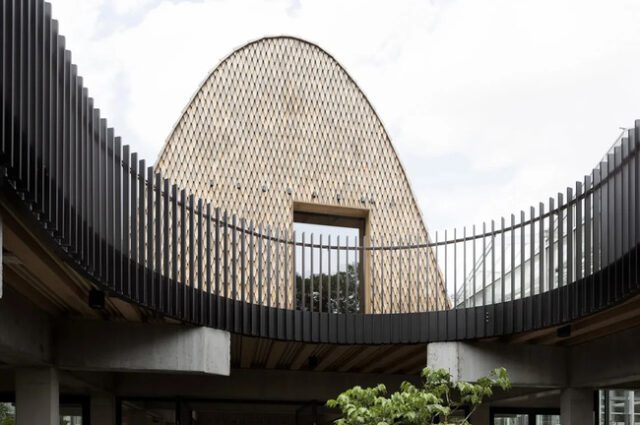
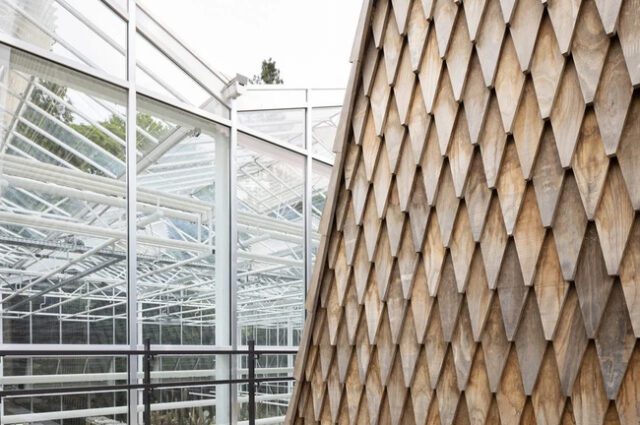
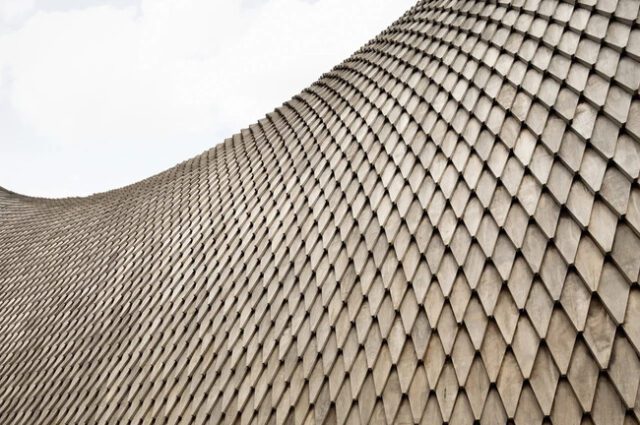


Humans have been representing the world around us in artistic creations for countless millennia. From cave paintings to ancient bone carvings, the meanings of ancient art are only sometimes truly intelligible to modern minds. Archeologists devote countless hours to uncovering, documenting, and interpreting ancient art. Among the more recent papers to interpret ancient South American artwork was published in Antiquity. A team of archeologists sought out the long-rumored rock art engravings of the Middle and Upper Orinoco Rivers in Colombia and Venezuela. Their findings shed light on the sheer amount of carvings and the impressive size of certain monumental snakes. Along the winding, ancient river, the archeologists searched in quest of carvings known by locals and the subject of rumors for hundreds of years. Using drones, photography, and their climbing ability, the archeologist authors of the recent paper documented 157 sites of rock art, noting there are likely thousands more out there. Carved into the rock were insects, alligators, geometric motifs, stingrays, birds, and human or humanoid figures. Sixty of the engravings stretched an impressive 30 feet or more.
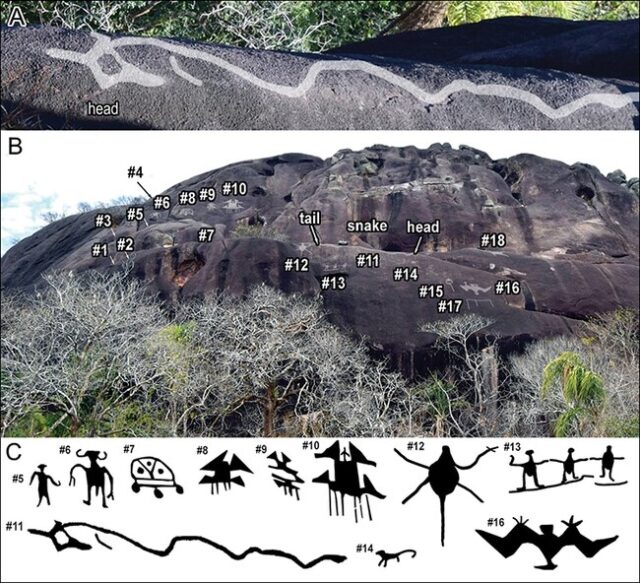
Who carved these pictographs, when, and why? According to the dating of deposits of pottery with similar designs, the engravings are likely about 2,000 years old. They may have been carved by Indigenous Piaroa artists or others from nearby tribes. The Piaroa, like others in the region, have ancient beliefs about snakes. The anaconda Cuämoi figures prominently, and his daughter Cuähuais believed to have created rock art along the Orinoco River. In cosmologies throughout South America, snakes can be associated with rivers, creation myths, and spiritual journeys. Why the reliefs were carved is uncertain. However, the authors noted that many were at the ancient river level around the time of carving. Given the size of the monumental figures, they’d be quite visible from afar. The team hopes to engage with the local Indigenous people whose knowledge of the region is unparalleled to continue to deepen their understanding of these artistic signposts along the historic river.
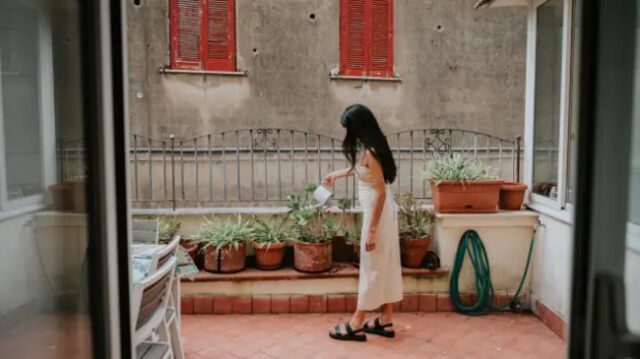
Sambuca di Sicilia, a picturesque village in Italy, gained international fame in 2019 with its innovative scheme to auction off old homes for as low as one euro. This campaign aimed to revitalize the local economy by attracting new residents and investors to rejuvenate its abandoned properties. The town repeated the initiative in 2021 with starting bids at two euros and is now preparing for a third round with bids beginning at three euros. This year, around a dozen properties are up for auction, with Mayor Giuseppe Cacioppo highlighting the substantial economic boost from previous sales, which injected 20 million euros into the local economy. These properties, featuring charming courtyards and iron-wrought balconies, require significant repairs but are deemed structurally stable. Prospective buyers must place a 5,000 euro deposit to participate, ensuring serious commitments to renovating the homes within three years, a term the town has been flexible with due to the pandemic.

The viral property sales have placed Sambuca di Sicilia firmly on the map, attracting international buyers eager to own a piece of Italian heritage. Since the start of the initiative, 250 homes have been sold outside the original auctions, underscoring the scheme’s popularity. One notable buyer, Meredith Tabbone from Chicago, secured a property for 5,555 euros in the first auction without having seen it in person. Her subsequent purchase of a neighboring building and extensive renovations totaling 425,000 euros illustrate the significant investments these low-cost homes can entail. Despite the challenges, Tabbone found personal fulfillment and a sense of community in Sambuca di Sicilia, aligning with the town’s renaissance. Her experience highlights the appeal of a slower, more meaningful lifestyle in a historically rich setting, and she plans to keep her home in the family, eventually donating it to the village, symbolizing a lasting legacy of the revival scheme.
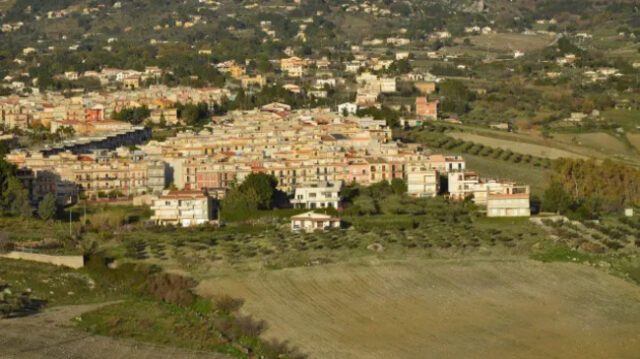
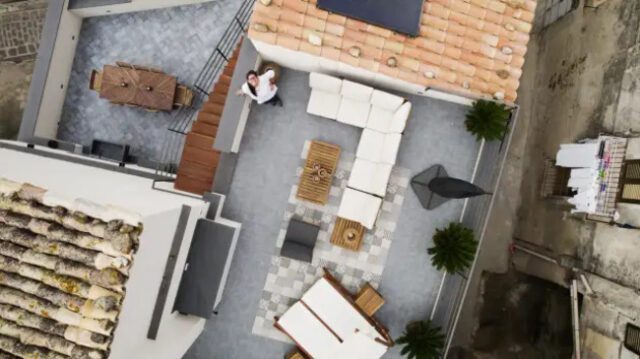


In early 2024, Jada Stratman, a 25-year-old entrepreneur, was on the hunt for retail space for her candle business, Brite Candle Co. During her search, she discovered Culdesac, the first car-free neighborhood built from scratch in the U.S. Culdesac, located in Tempe, Arizona, emphasizes biking, walking, and public transit over car usage, offering residents discounts on transportation services like Waymo, a self-driving taxi. The community, which currently houses 180 residents with plans to expand to over 1,000, provides a variety of amenities including a pool, gym, rental cars, light rails, and a free e-bike for each resident. The apartments range from studios to three-bedroom units, with rental prices starting around $1,400 per month. Stratman moved into a live-work space within Culdesac in February, paying $1,472 monthly plus $140 for utilities and Internet. This space features a walk-in closet, a washer, and a dryer, and seamlessly combines her retail shop at the front with her living quarters at the back.

Living in Culdesac has been a transformative experience for Stratman, pushing her out of her comfort zone and reducing her dependency on her car, which she now parks off-site as required. She finds the community’s car-free concept liberating, as it promotes a more active and social lifestyle. Stratman appreciates the integration of her work and living spaces, which has been particularly beneficial for her small business. The setup has not only saved her money but also fostered the growth of her candle business. Despite initial discomfort with having customers in her personal space, Stratman has grown to enjoy the interaction and is excited about her business’s potential expansion. The friendly and connected environment of Culdesac has significantly enriched her life, making her feel more extroverted and content in her new community.

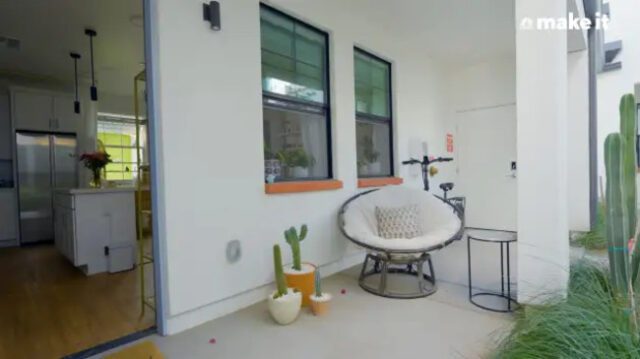
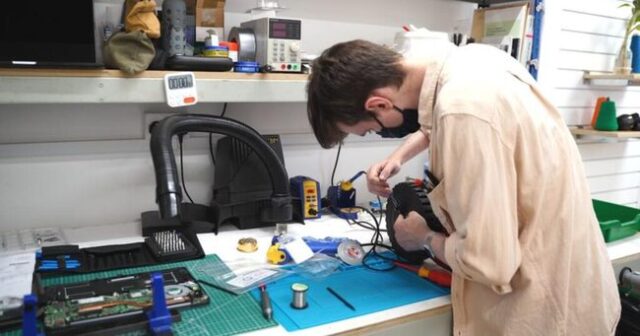
In the UK, despite being the world’s second-largest generator of electronic waste per capita, a thriving subculture of Repair Cafes and social groups is working to mitigate this issue. There are 580 repair cafes regularly hosting events where volunteer fixers collaborate with community members to repair household items like toasters, electronics, coffee makers, and lamps. This initiative not only helps reduce the volume of e-waste but also fosters community engagement and skill-sharing. According to a featured story in the Guardian, these gatherings offer numerous benefits, including reducing landfill waste, lowering carbon emissions, preserving old skills, and combating loneliness among participants. Stefania Fantini, a 59-year-old sound engineer, emphasizes the importance of sharing repair knowledge, particularly through her group, Rosie the Restarter, which focuses on empowering women and non-binaries to learn and practice repair skills.
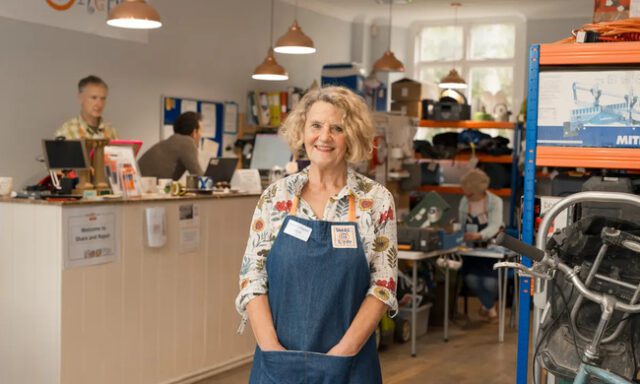
Organizations like the Restart Project play a crucial role in this movement, coordinating repair cafes and advocating for legislative changes under the Right to Repair Europe banner. They highlight that millions of tons of electronics are discarded annually due to a lack of repair knowledge, the convenience of cheap replacements, the decline of traditional repair shops, and the intentional design of products to be difficult to repair. Through initiatives like Restart Parties, the Restart Project aims to educate communities on the importance of repair, extending the life of household items, and reducing environmental impact. In places like Islington, London, they work tirelessly to establish accessible repair cafes, promoting a culture of repair and reuse. These efforts are not only about fixing broken items but also about building a sustainable and connected community, as exemplified by their success in repairing nearly half of the items brought in during their events, significantly cutting down on carbon emissions and landfill waste.

Stanford University’s 2024 graduation ceremony was a momentous occasion, featuring Virginia Hislop, a 105-year-old student who finally completed her master’s degree in education—an achievement 83 years in the making. In 1940, Hislop’s academic journey was interrupted by the onset of World War II. With her fiancé George called to military service, the couple hastily married, and Hislop joined the homefront war effort, setting aside her academic aspirations to Continue reading “She Finally Earned Her Stanford Master’s Degree at 105: ‘I’ve waited a long time for this’” »

What started as a serene weekend fishing trip became a dramatic rescue operation for Bob Gist, 61, and his colleague, Brad Carlisle, both State Farm Insurance employees. They had hired Jordan Chrestman, a local bass fishing guide, to take them out on Granada Lake in Mississippi. After a quiet morning, they decided Continue reading “Fishermen Pull Off Dramatic Rescue of 38 Dogs Treading Water with No Shore in Sight” »
























































